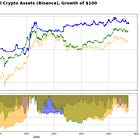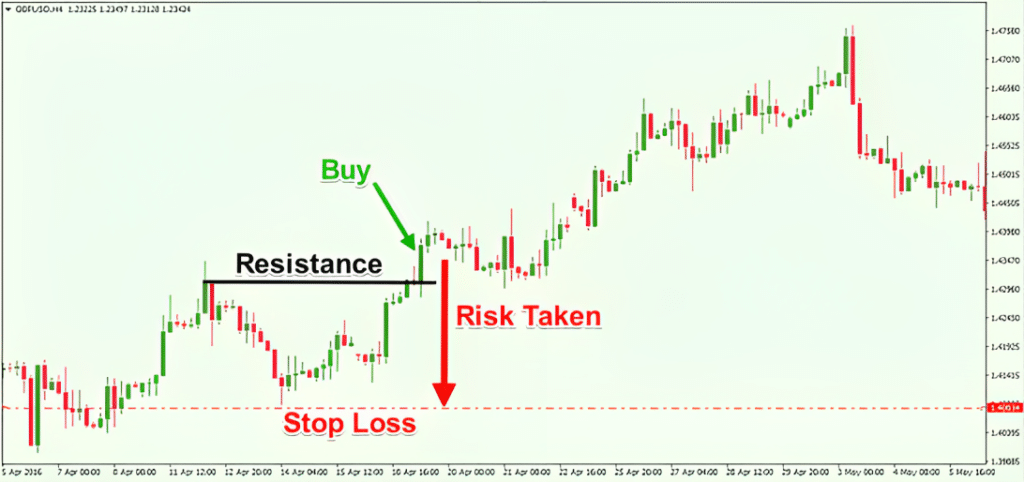📝Exploring The Effect of Stop Losses - Research Article #48
A deep dive into the hidden costs of using stop losses
👋 Hey there, Pedma here! Welcome to the 🔒 exclusive subscriber edition 🔒 of Trading Research Hub’s Newsletter. Each week, I release a new research article with a trading strategy, its code, and much more.
If you’re not a subscriber, here’s what you missed this past month so far:
On October 19, 1987, known as the Black Monday, the stock market crashed with a speed no one had seen before.
Panic spread like wildfire, and prices dropped over 20% in a single day.
Traders were glued to their screens, helpless as the market crashed.
Among them was Tom, an experienced trader with many years in the market’s arena.
But on that day, he watched in horror as his portfolio, once robust, sank like a stone.
In the chaos, some traders had a secret weapon—automatic stop loss orders.
When the crash hit, their stop losses kicked in, selling their positions before they collapsed further.
The aftermath of the Black Monday sent shockwaves through Wall Street.
The stop loss became a symbol of survival in volatile markets, and from that day forward, Tom never traded without one.
The crash had forever changed how traders approached risk, making the stop loss an industry staple.
But if we set aside the emotional baggage from similar days, is using a stop-loss really an effective technique, for all trading strategies?
In finance, if we want “protection”, we have to pay for it.
Consider the example of house insurance.
If a disaster happens, and the house is insured, you will receive a compensation for it. But was that free protection? No, you paid monthly premiums, for a very long time, and most times, people never realize that protection.
Why do we pay monthly premiums?
Because someone else must be willing to take on that risk, and they also want to be compensated for the risk that they carry.
The same happens with stop-losses.
It might be an immediate safety against highly unlikely events, but you also need to pay for it.
The issue is, the price of a stop-loss insurance, is usually not as apparent as a monthly premium.
Index
Introduction
Index
Common Reasons For Using a Stop-Loss
Strategy Exploration and Performance Analysis
Conclusion
Python Code Section
Common Reasons For Using a Stop-Loss
The number 1 reason “retail” traders stand behind a stop-loss is to limit the maximum loss of a trade.
They set a level that they believe it’s contradictory to their original signal, and they use the distance from the entry to that stop level, to calculate the allocation to that trade.
And that position size is usually calculated as a function of how much the trade will lose, if the stop loss gets hit.
A maximum loss of 1%-2% of total capital per trade is the norm.
As we’ll see below, this can be just an illusion, depending on the type of strategy. It can actually cost us money in the long-term to have that protection.
Another reason, is that it is a price where the trade is no longer valid.
It’s a price that if invalidated, the original thesis was wrong.
Let’s assume that the trader has a good sense of what’s a good trade or a bad trade and where it is invalidated (big assumption).
Even then, you’re making the assumption that if the stop gets hit, price will continue in that direction, right?
Otherwise, if you thought it would revert, you wouldn’t exit the position.
So, at the end of the day, you are making a momentum bet. You’re betting that price after that point has reverted and will continue to do so.
This might be good for trend models, because you’re betting that prices will exhibit autocorrelation and continue to trend against you, but what about mean reversion models?
If you’re expecting something to revert, doesn’t it make sense that the more something moves against your original signal, the signal is actually getting stronger and not decaying?
So why are you leaving a position?
These are all questions we must think about, and not take “retail” quotes as a given.
Every assumption must be adapted to what we’re trying to achieve.
Strategy Exploration and Performance Analysis
For this article, I’ll use a real model that we’ve looked into in the last of my research articles series:
Below is the distribution of returns on capital, of the strategy above.









